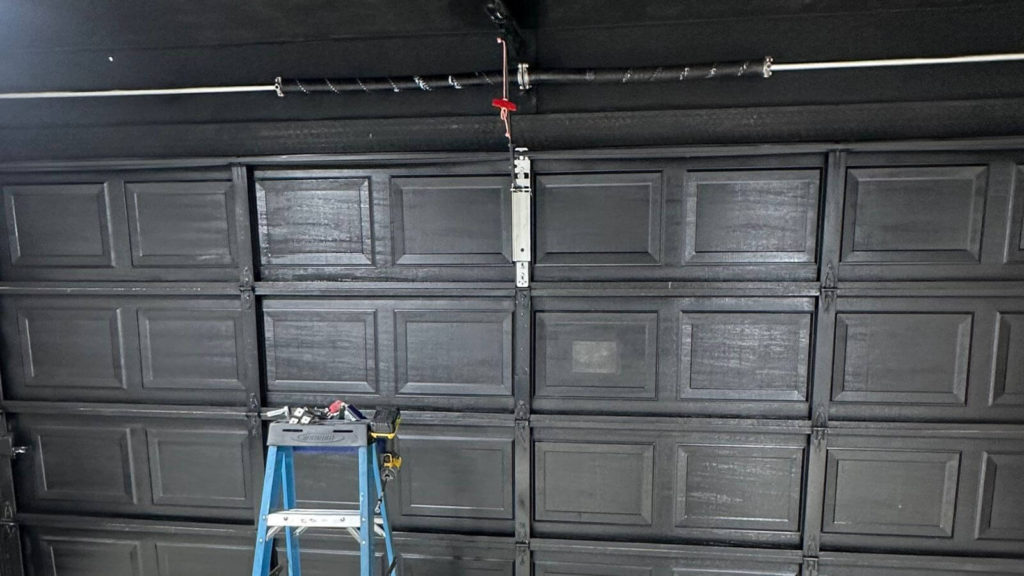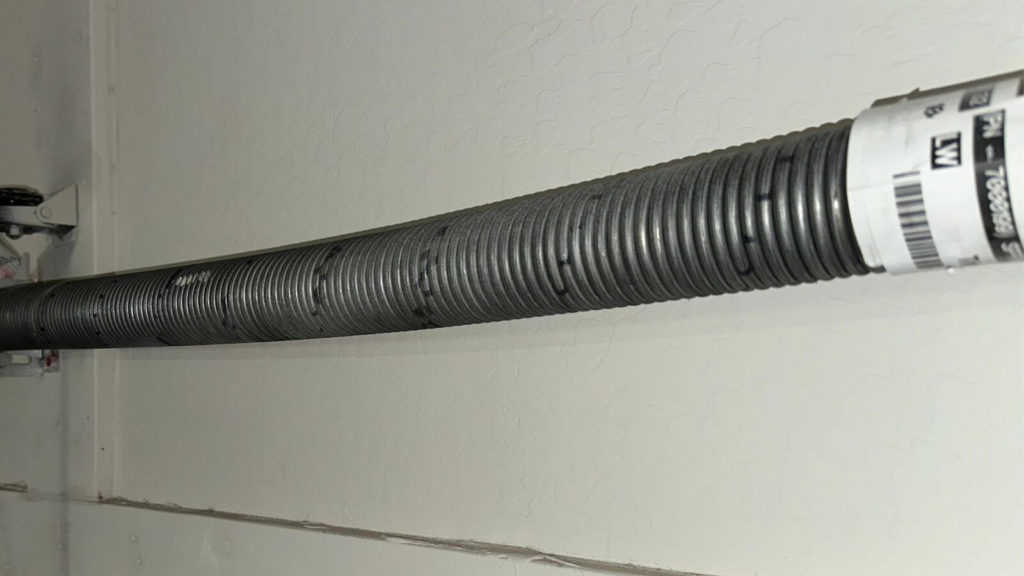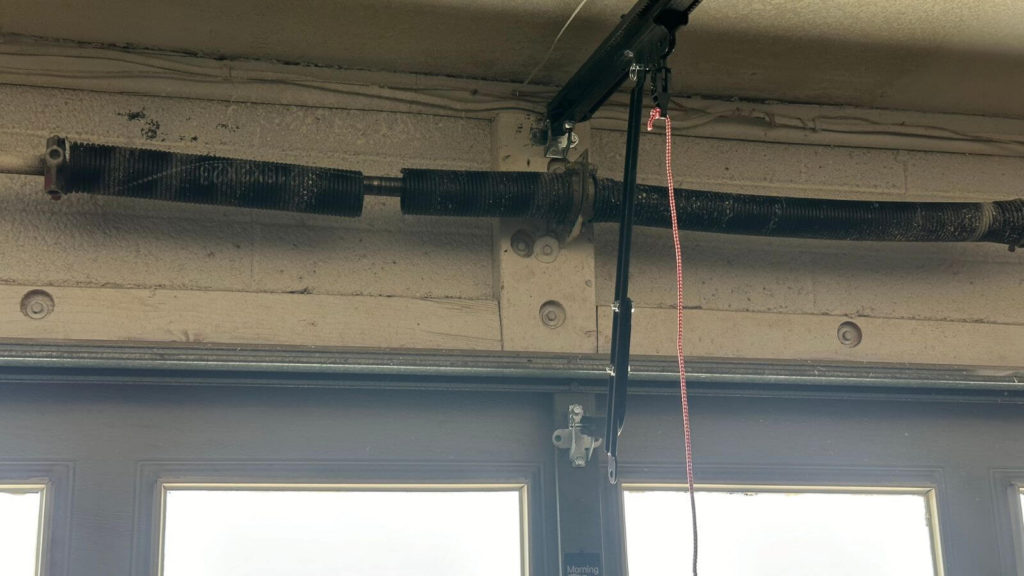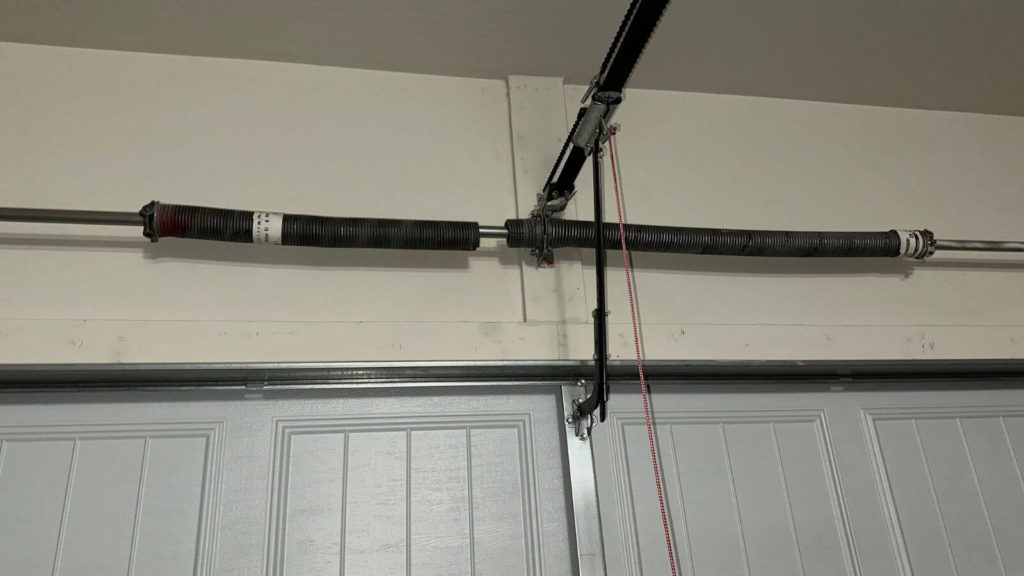How Garage Door Springs Work
You might be aware that your garage door has springs but most people don’t really understand what the true purpose of garage door springs actually are.
Overall, the idea around garage door springs is that they counterbalance your garage door so that it is “lighter” than what it truly is. If you think about the true weight of garage doors, roughly up to as much as 400+ pounds, that would be extremely tough to lift manually and if you have an automatic garage, the garage motor would quickly be out of operation if it had to always lift the true weight of the garage door.
The scientific side is that garage door springs either store or release energy to help with this counterbalance but with that, the real purpose is to keep your garage door operating smoothly and safely. With those two things in mind, we’ll dive a bit into when you might need to get your garage door springs replaced because if you wait too long, it could turn into an unsafe situation or put more strain on other parts of your garage door, like the motor than they can withstand.
Types of Garage Door Springs
First let’s start off with the two main types of garage door springs, torsion and extension springs, and then we’ll get into what to look for in each of them to see if you need to get them replaced.
Torsion Garage Door Springs
These torsion springs are normally mounted above the garage door opening on a metal shaft. They are typically known to be a bit more durable than extension springs due to them having a more controlled motion with the stress of the tension being evenly distributed along the entire coil.

Extension Garage Door Springs
Extension springs are typically mounted on either side of the garage door running parallel to the horizontal tracks of your garage door. They operate by stretching and contracting, rather than twisting like torsion springs, and this is what causes them to be a bit less durable and at risk of needing repair more frequently.

Signs Garage Door Springs Need to be Replaced
There are some clear cuts signs that your springs need to be replaced like your door not opening at all but there are some other signs that you can spot that will help make sure that you don’t lose all operation of your garage door.
Visible Wear and Tear
Just taking the time to look at your garage door springs every now and then can go a long way. You might not be able to spot small issues but there are some that are pretty obvious that you need to get your springs replaced. If you notice any of the following, make sure you get them replaced pretty soon or it’ll cause large problems pretty quickly.
- Rust or corrosion on the springs
- Breakage of the spring
- Slack in cables that are connected to the springs


Garage Door Operating Poorly
With how important garage door springs are to the operation of the entire door, you can start to understand if you need to replace the springs by just noticing how your door is operating.
The first is if your door is difficult to open either manually or automatically. If this is the case, the springs might be losing their tension and not performing as they used to when they were new. One way to spot this is to have your door sit at a partially open position, if it either goes up or down after this without you making that happen, it’s likely time to replace your garage door springs.
The second is if your door is opening up too quickly or slowly. Similar to above, this likely means that the springs’ tension is lacking, and getting them replaced is probably best. If left too long, this could cause your door to not be able to be opened.
The last one is if your garage door movement is uneven. When you open or close your garage door and it seems to be jerking or moving a bit uneven this is a sign that one of your springs is about to fail. Especially if you moved into a home that you’ve never replaced the garage door springs, you don’t know if one was replaced and the other wasn’t and if this was the case, that means the other might be failing.
There are some other signs that you need to get them replaced but these are some that can be spotted and ultimately fixed. If you decide to wait because you don’t want to invest in new springs, you first might want to understand what happens if you do this.
What Happens if you don’t Replace your Garage Door Springs
To start off in the best scenarios when you wait to get your garage door springs a bit too long, the other pieces of the whole garage door can experience more wear and strain than they should be.
Whether it’s the motor needing to have more “juice” behind it to open the door that is heavier than usual or the rollers and tracks bending or getting damaged because the door is closing too quickly, these all can lead to needing more repairs than just replacing the springs.
The more serious side of this is that your door could suddenly collapse causing, at the least, that you’re unable to open your garage door and, at the most, it could land on someone or something that is in its way. The other serious impact of waiting to replace your garage door springs is that with all the tension they are under, they could suddenly break and turn into a projectile hitting someone or something causing some pretty high injury or damage. If this is the case, you likely need emergency replacements done.
Ultimately, getting your garage door springs might seem like a simple thing to push off but the longer you do, the higher the risk of injury or the higher dollar amount you’ll have to pay to get other parts of your garage door repaired.
If you think you might be in need of replacing your garage door springs, reach out and we’ll come by to give you a free estimate and ultimately fix them if you’d like us to. We want to help keep your door operating and your family safe!
